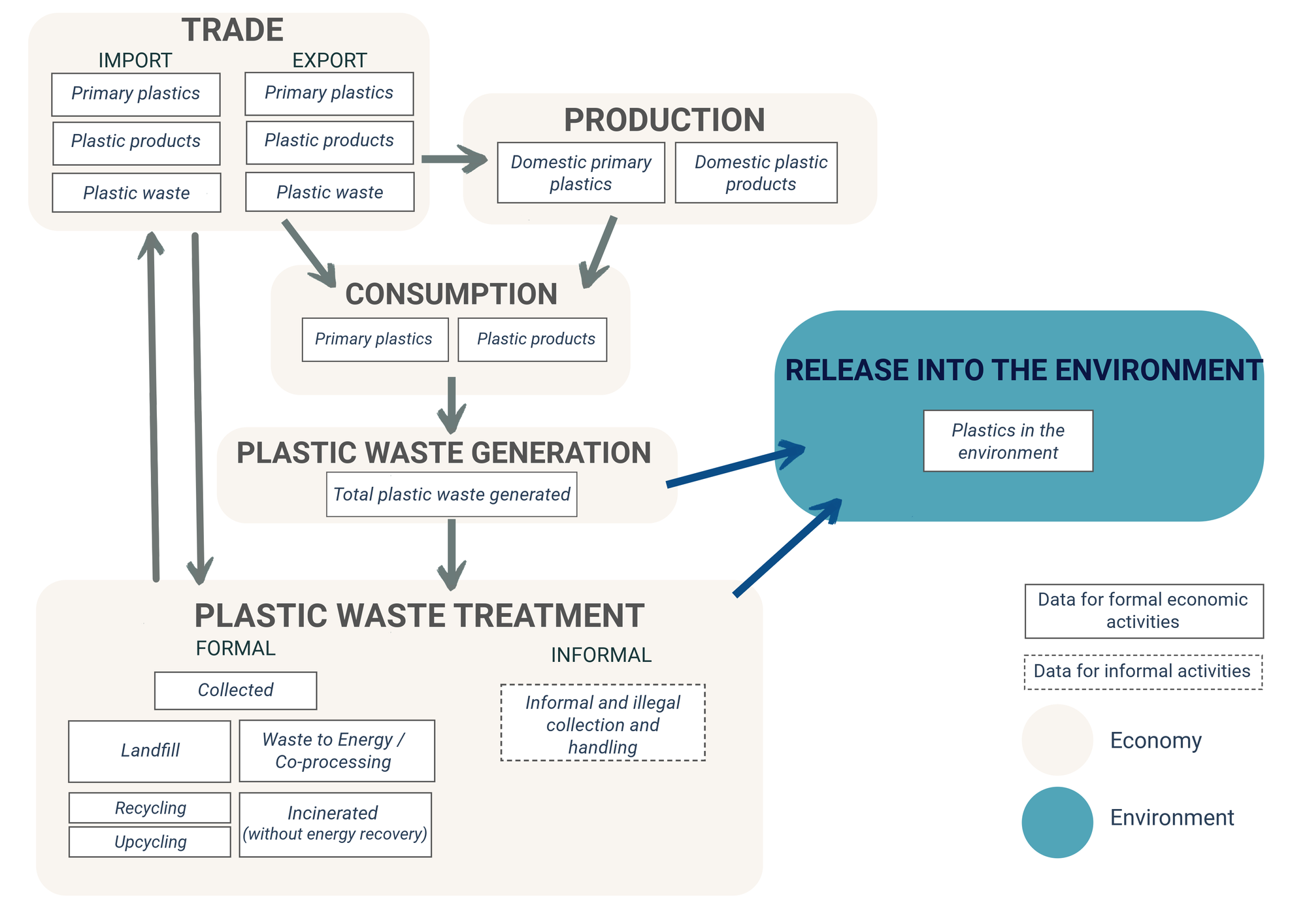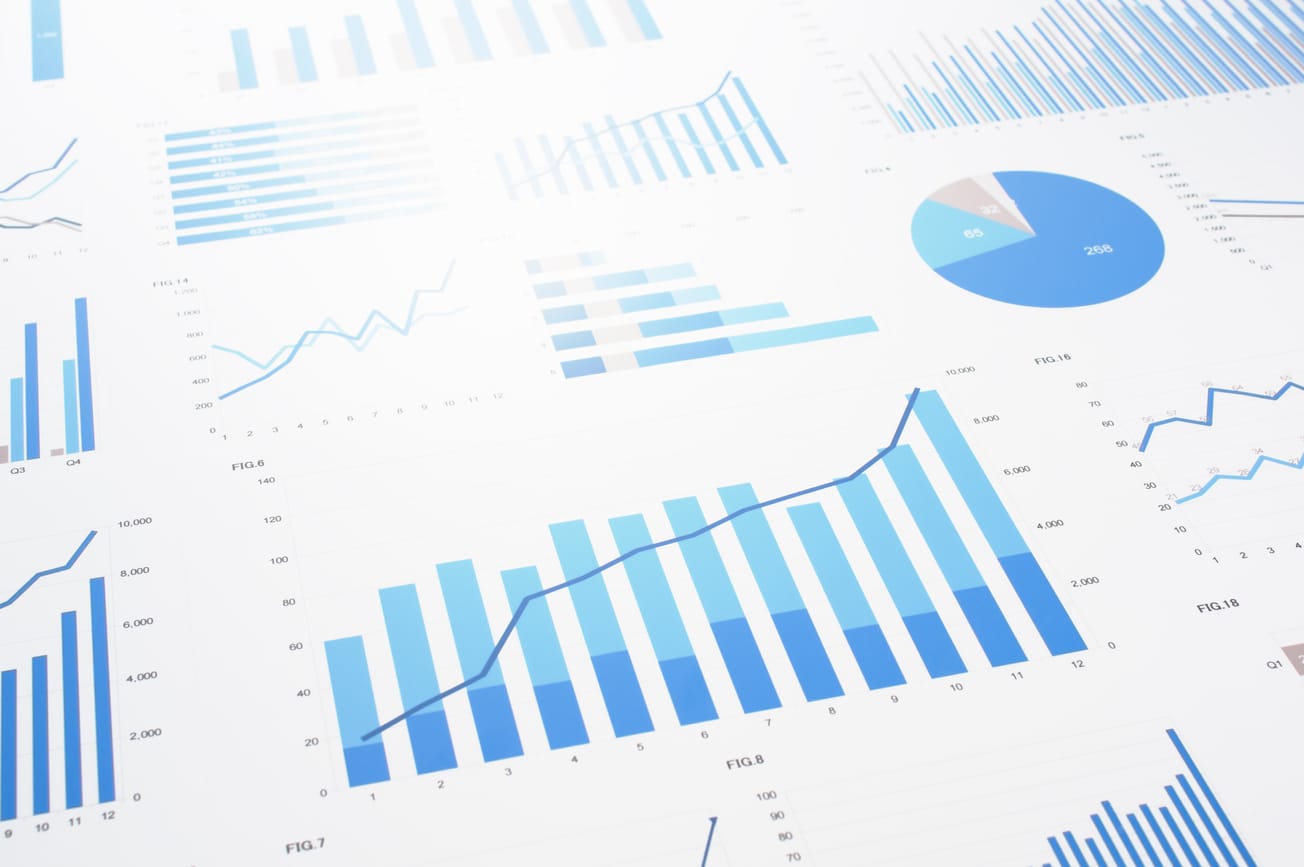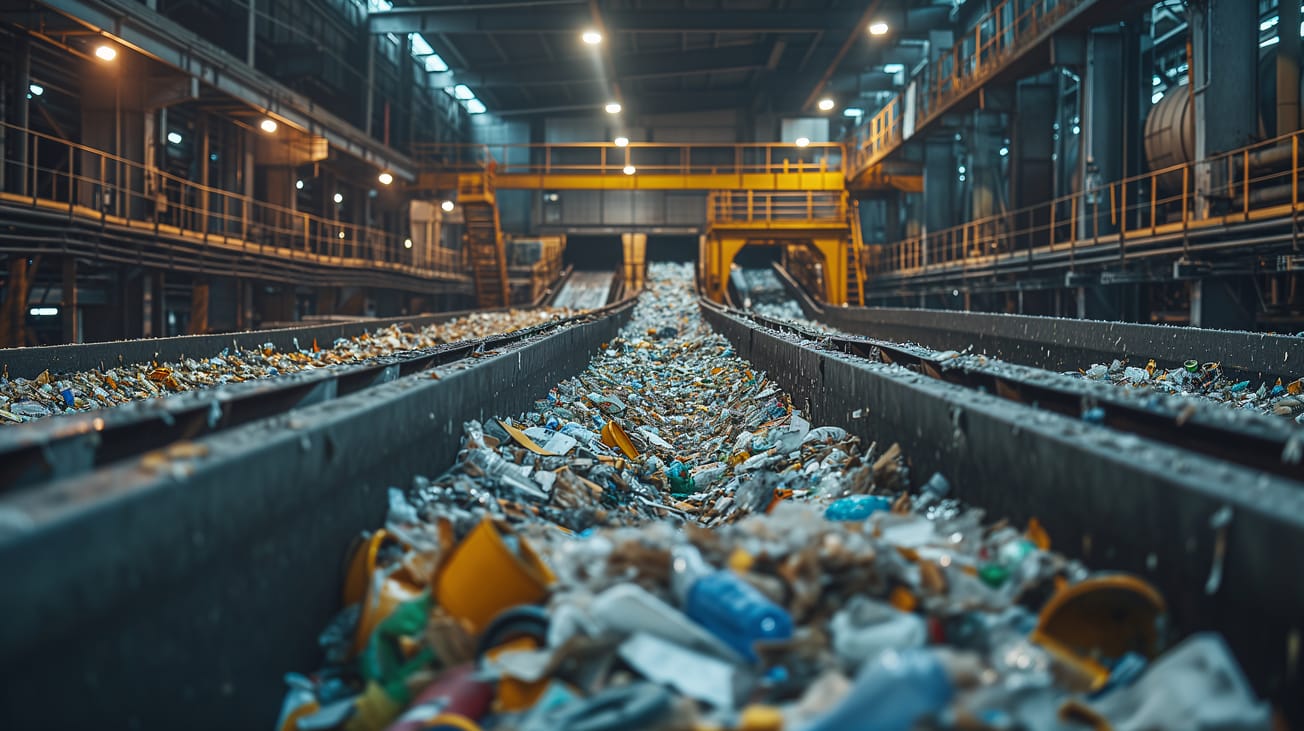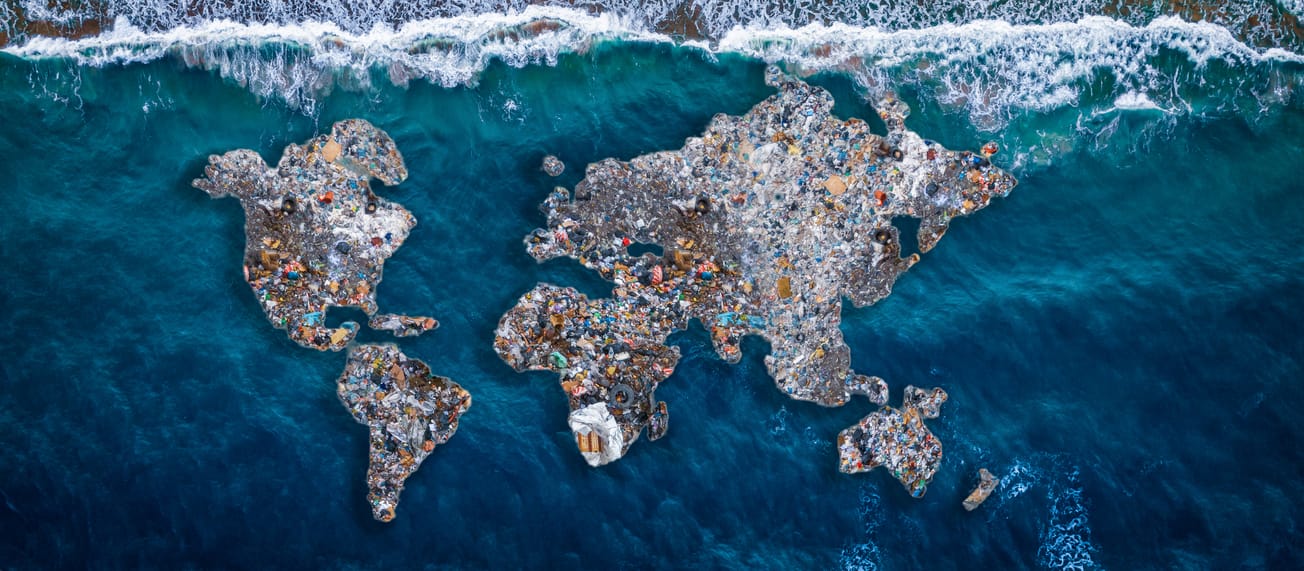As we approach the fifth and final round of negotiations for the global plastic treaty, in Busan, Republic of Korea in November 2024, pressure is increasing for countries to deliver an ambitious treaty that will effectively curb plastic pollution.
The United Nations Environment Assembly Resolution 14 (UNEA-5.2/Res 14), adopted in March 2022, calls for a "comprehensive approach that addresses the full life cycle of plastic." However, a persistent lack of data to inform indicators of progress has hindered the global and national decision-making needed to mitigate plastic pollution, encourage sustainable practices, and support circular economy initiatives.
Comprehensive data is crucial to track the full lifecycle of plastics, from production to disposal and environmental release. Ensuring the treaty includes equitable processes that promote transparency and accountability and improve the availability data over time will be crucial to its success.
Why data is essential to the global plastic treaty
Comprehensive data is crucial to track the full lifecycle of plastics, from production to disposal and environmental release. Currently, most countries face significant limitations in tracking plastic flows, with data fragmented across different lifecycle stages and sectors. This fragmentation impedes holistic understanding and effective policy implementation. Without robust national data systems or pathways to develop them, countries will struggle to:
- Set realistic yet ambitious goals through national action plans
- Monitor the implementation of commitments
- Verify progress and ensure integrity of potential market mechanisms
- Report progress transparently within their countries
- Contribute to aggregating global progress against treaty objectives
- Assess the overall effectiveness of the instrument
- Support the ratcheting mechanism by providing evidence for increased ambition
Developing comprehensive national data infrastructures, with adequate support for capacity building, finance, and technology transfer, is essential for the treaty's success in combating the global plastic problem. Addressing the data gap is crucial to secure ambition and equity within the treaty design, and to enable the effective increasing of commitments over time.
Introducing the Plastics Data Checklist
To aid countries in assessing their readiness for implementing the treaty, in terms of national data availability, we have prepared the Plastics Data Checklist (the Checklist) and User Guide. The Checklist covers essential data points across the lifecycle of plastics, providing a comprehensive overview of data availability to inform plastic management. It focuses on nine data categories including production, consumption, trade (Import & Export), plastic waste, waste treatment, waste trade, environmental leakage, alternative waste collection and handling methods and source-level activities (Figure 1).
These categories align with the treaty's expected scope of addressing the full lifecycle of plastics.
- Data on the production and consumption of plastics are essential to quantify plastic flows, understand the scale of plastic use and identify areas for reduction.
- Trade data helps track the transboundary movement of plastics, which is crucial for understanding global distribution patterns.
- Waste generation, treatment, and trade data are critical for evaluating current management practices and identifying areas for improvement.
- Environmental leakage data is important for assessing pollution levels and the effectiveness of mitigation strategies.
- Data on alternative collection methods and source-level activities offers insights into innovative solutions and localised practices, potentially informing both national policies and global best practices.
Together, these data points provide a holistic view of the plastic lifecycle, enabling countries to develop targeted interventions, track progress, and contribute meaningfully to global plastic pollution reduction efforts.

Using the Plastics Data Checklist
This Checklist is designed for government officials and policymakers seeking to understand the current availability of relevant data, identify key data gaps ahead of needing to develop national action plans, and establish a foundation for developing comprehensive national plastics inventories and evidence-based policies. It serves as a crucial first step in understanding the flow of plastics within a country, from production and import to consumption, waste management and final disposal. This can provide countries with an understanding of priorities for funding, technical and capacity building and enable early requests for such support following adoption of the global plastic treaty.
The Checklist is not meant to be exhaustive or overwhelming, but rather provides an accessible entry point for countries to start assessing their plastic situation and initiating the necessary national coordination to link data with policy development and implementation.
As capabilities expand over time, ideally supported by mechanisms established through the global plastics treaty, countries can gradually broaden their data collection efforts to build a more comprehensive picture of their national plastics landscape.
Where to begin
To use the Checklist, we suggest following three main steps:
- Familiarisation with data categories and likely sources (this will vary from country to country);
- Assessment of data based on nationally relevant sources, availability and reliability; and
- Analyse data gaps and identify priority areas for data collection.
For countries beginning their journey to collect data on plastics, the checklist suggests prioritising a few key data categories as a starting point, including plastic waste generation and collection, import/export of plastic products, domestic production, and waste treatment methods. These areas are often aligned with existing data collection systems, such as customs and waste management records. By concentrating on these fundamental aspects, countries can begin to develop a basic understanding of their plastic lifecycle, from production to waste management.
National plans are expected to be a key component of the treaty's implementation, allowing countries to set nationally determined targets and policies tailored to their specific circumstances. By prioritising these key data categories, countries can establish a baseline understanding of their plastic flows, crucial for setting realistic and ambitious reduction targets in their national plans.
To successfully implement the Checklist, it is recommended that countries adopt a whole-of-government approach, regularly review and update their data and progress, invest in capacity building for practitioners and leverage international expertise.
Future work
The Checklist, currently focused on physical plastics flows, will be further expanded in future. This expansion will include additional data categories such as socio-economic indicators, environmental data, regulatory frameworks, infrastructure capacity, and existing initiatives. By broadening its scope, the checklist aims to transition from a tool that tracks material flows to one that provides a comprehensive understanding of plastic-related challenges.
Plastic pollution is a complex issue requiring a multifaceted approach. The broader checklist will enable policymakers and researchers to develop more informed and effective strategies for plastics management, taking into account the complex relationships between plastics, society, and the environment. As we continue to understand these interconnections better, the checklist will continue to evolve, improving our ability to address plastic-related issues in different contexts.
Data for the global plastic treaty and beyond
By starting to use the Checklist now, governments can enhance their understanding of available national data, ultimately supporting them to:
- Prepare for INC-5, namely understanding the flexibility that may need to be built into national monitoring, reporting and verification (MRV) requirements to ensure all countries can participate (based on a country’s current data availability)
- Assess their readiness to implement the global plastics treaty and support the development of funding pipelines and prioritisation of requests for support and capacity building
- Develop ambitious yet realistic targets, policies and measures that are evidence-based, country-specific and capable of monitoring, tracking and reporting
- Monitor the progress towards the national targets contained in national action plans
- Produce indicators to track progress against national and international targets and enable transparent reporting
The global plastics treaty has the potential to be the catalyst to finally close the plastics data gap. To do this, the final treaty language needs to ensure a transparent reporting and monitoring system that requires participation by all countries, but with the necessary flexibility built in to reflect the very different capacity that countries currently have in terms of plastics data.
The Checklist is a critical first step – enabling countries to understand their current data and what is required to transparently demonstrate progress and increase ambition over time to end plastic pollution.
Authors: Randika Jayasinghe, Eliza Northrop and Bella Charlesworth







